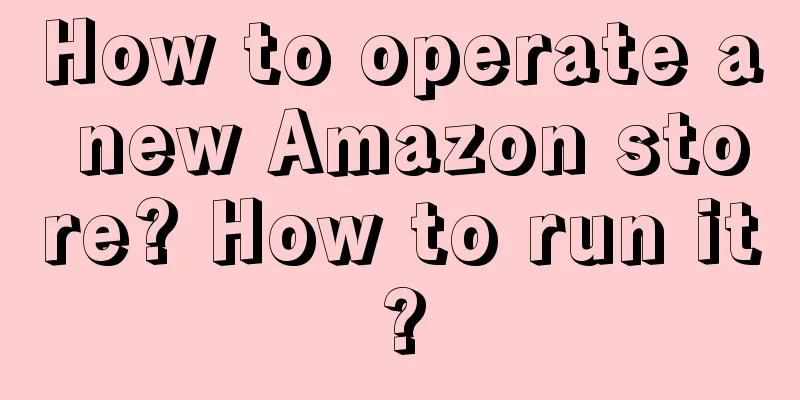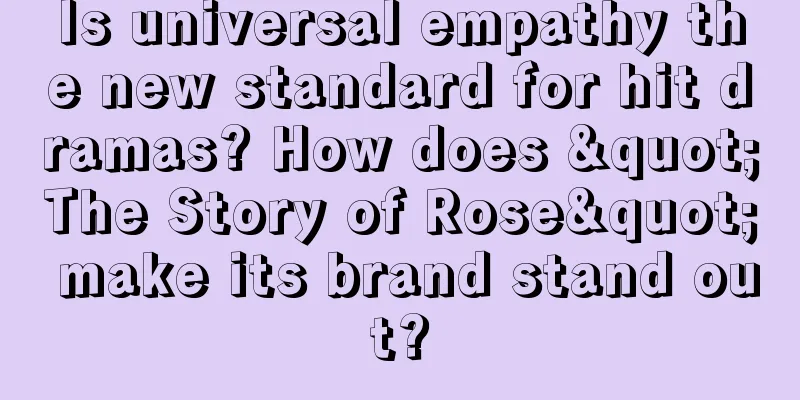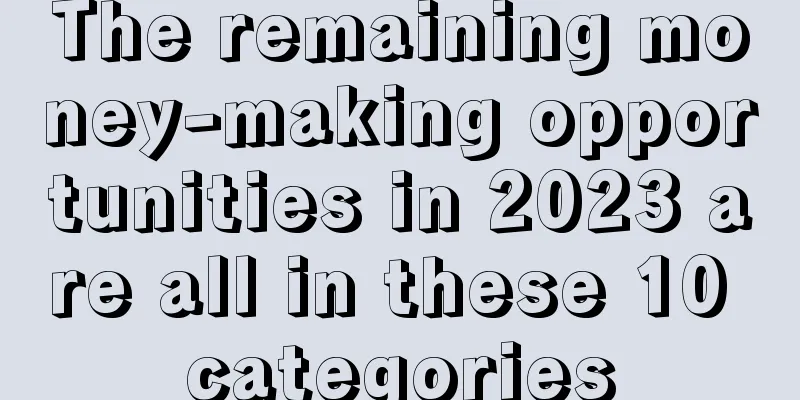Nine out of ten advertisements fail. How to conduct Women’s Day marketing?

Nine out of ten advertisements fail. Do brands still dare to do Women’s Day marketing? More and more brands have become very cautious, and even take an attitude of "it's better not to do it than to worry about making mistakes" when it comes to Women's Day marketing. They are afraid of making mistakes, so they can only do safe topics about women, and the consequence is that the marketing is stereotyped and consumers are not interested at all. Boring cases not only waste marketing costs but also fail to impress consumers. No matter how you calculate it, it is a loss. At the same time, avoiding the problem will not solve it. Brands cannot give up the "March 8" node forever. So, how can we do Women’s Day marketing to avoid pitfalls and be outstanding? These are actually two questions. The first is the most basic question: how can we avoid pitfalls? Based on the responses of many senior marketers, DaoFa summarized the "Six Don'ts" guide to avoid pitfalls: Don't take a male-centered perspective; don't praise women too much; don't create gender confrontation; don't use jokes or teasing advertisements; don't reinforce female stereotypes; don't just take advantage of hot topics without taking action. The second question: How to make Women's Day marketing outstanding? Combining the answers of many senior marketers, Daofa will try to provide some references for brands from the perspectives of content and practice. Brands that don’t shout slogans but tell the “story of middle-aged women” well will stand outThe Women's Day cases that consumers hate the most have one thing in common: they fail to see the real plight of women. This is the biggest prerequisite for doing a good job in Women's Day marketing. For example, a certain daily chemical brand that was criticized by the whole network before had the slogan "Make moms wash clothes more easily" when promoting laundry detergent. This is a typical portrayal of not seeing the real plight of women. For women, the dilemma is not whether washing clothes is easy or not, but why only mothers do the household chores. As a textbook case, Neiwai's "NO BODY IS NOBODY" well demonstrates what it means to see the real dilemma of women. In the traditional perspective, women should have a curvy figure. Therefore, 80% of the bras on the market are used to gather women's breasts to look more attractive. However, when a woman wears a gathered bra or a steel ring bra, her body must feel "uncomfortable". With insight into this dilemma of women, Neiwai uses 7 amateur women with different body shapes to tell us that there is not only one body shape in the world, and “no body shape is insignificant”. Women should liberate themselves from the perspectives of others and accept themselves. Hunter, a brand manager in the fast-moving consumer goods industry, explained the phenomenon of brands often failing. He believes that many failed marketing cases in the past often fixed women in specific roles or labels. The narratives of "good wives and good mothers", "housewives" and "weak women" remain in the brand's stereotypes, without real contact with women, and thus unable to tell touching stories. While brands are still being criticized by consumers for not seeing the plight of women, a small number of brands have already seen the arrival of the "middle-aged women's era". Does a middle-aged woman mean a middle-aged woman? There is an increasingly clear consensus that women who possess mature feminine power, are optimistic and positive, symbolize righteousness, integrity, and even have some masculinity can be called middle-aged women. Kalala PR Director Bulanqi told us that wherever she looked, the most obvious trend was that media + feminism became a new trend, with more and more female directors, screenwriters, female talk show hosts, and feminist topics and works entering the public eye. Among the film works, the best-selling and well-received "Good Things", "Determination to Run Away" and "Barbie" proved that consumers love stories about middle-aged women. At the same time, she also observed that Huaxizi recently announced that Song Jia became the latest spokesperson. Song Jia, who is labeled as "sister", "female protagonist" and "middle-aged woman", represents that domestic beauty products are ready to break the internal circulation of "white, young and thin" and move towards a new stage of aesthetics. "Overnight, it seems that middle-aged women are considered to be a new kind of female power, and this naturally represents new consumer power. For brands, how to tell the 'middle-aged women's story' well will help to gain new sales," she mentioned. In fact, the arrival of the era of middle-aged women is related to the plight of women mentioned above. Women understand women better, and middle-aged women who have the power to resist can take the initiative to stand up and solve the real dilemma of women. Just like the scene shown in the movie "Good Things": Song Jia played the role of a single mother Wang Tiemei who took the initiative to help her neighbor Xiaoye solve the stalker, which made the audience applaud. This small action touched upon the deep hatred of women for stalkers, and the middle-aged woman stood up to solve this dilemma. For brands, telling good stories about middle-aged women requires higher content requirements based on seeing the real difficulties faced by women. Just talking about difficulties is just a passing line. Consumers also want to see more stories about middle-aged women who stand up to solve women's difficulties and draw the power of change from these stories. In fact, whether it is whether one can gain insight into the real dilemma of women or how to tell the story of the "middle-aged women's era" well, behind all of these, it represents that consumers would rather see someone solving the real dilemma of women. Xiaogua, a senior operator of a clothing brand, told us that the awakening of women's self-worth has also made them pay more attention to their own rights and interests. In the past, slogan-like Women's Day marketing would not help women much, but the promotion of women's rights is real and beneficial. Putting care for women into practice can better impress consumers. It is better to do more than talk. The essence of Women's Day marketing is not to "praise women" but to "see the real plight of women" and stand up to solve the problems. How to avoid sloganeering? Start by learning how to impress brand loyalistsCompared with the large-scale and comprehensive marketing in the past, brands now prefer to make their marketing smaller and more detailed. Large-scale marketing requires brands to spend a lot of money on traffic to get good exposure data and conversion. Consumers are becoming more and more sophisticated, and it is difficult to be impressed by a beautiful TVC. At the same time, in the new marketing era, large-scale marketing will definitely not be able to get high-cost-effective ROI data, nor can it really impress consumers. Instead of trying to please a large group of people, it’s better to impress the brand’s loyal fans first. If a brand’s Women’s Day marketing doesn’t even win the support of its own loyal users, it can’t expect potential users to be impressed. Momozi, CMO of Otter Tonton, believes that the first purpose of node marketing is to serve existing customer groups, and the second is to influence more circles or new customers through communication and creating volume. Start with the core female users of the brand, gain insight into their lives, and provide them with solutions. In Momozi's opinion, RT-Mart's "Da Run Hua" case in 2023 well reflects the essence of marketing activities. When RT-Mart saw that some consumers would buy one or two bouquets of flowers when buying vegetables, on Women's Day, RT-Mart temporarily changed its name to "Da Run Hua" and launched related TVCs, using flowers as the theme to introduce that every woman is a different kind of flower. Now that we have found the right users, how can we make them more receptive to Women’s Day marketing? First of all, brands must learn to make the topic “light”. "Consumers nowadays are more averse to values, especially in this era, no one wants to be preached. Brands should portray the most authentic women, who are in contact with consumers in their daily lives, rather than those tall but empty images that are far away from consumers. On the contrary, they can quickly narrow the distance with consumers." Xiaogua, a senior operator of a clothing brand, admitted that the pressure of the current social environment makes consumers feel helpless when faced with overly heavy topics. If brands cannot control the intensity of women's topics, they can start with the subtle details of women's real lives. Just as the movie "Good Things" used a relaxed way to let the audience see different women's issues, now in Women's Day marketing, brands are gradually turning to lightweight women's topics that are easier to spread and accept. Secondly, in terms of marketing form, brands can pay more attention to offline flash sales. Lightweight stories are easily accepted by consumers. At the same time, choosing offline flash marketing is also conducive to dissemination. From past marketing cases, we can see that many widely disseminated cases basically come from users' offline check-in participation and online posting exposure. Offline flash is more realistic, and users can also feel the brand's intentions, which resonates with both parties. Easter EggsFinally, we also asked DeepSeek what it thinks an excellent Women's Day marketing campaign should look like and how it would plan an excellent Women's Day marketing campaign to see if it could bring some new inspiration to everyone.
"Use a 5-cent piece of paper to tear open a hole for tens of millions of traffic" - by turning product packaging into a debate arena for social issues, allowing consumers to vote on brand values by "tearing" the paper, the cost is infinitely close to zero, but the emotional connection and communication potential far exceed traditional advertising. The essence of Women's Day marketing is a sincere dialogue between brands and women. Nine out of ten ads fail, which is not what we want to see. What we want to see more and more brands solve more difficulties in women's lives. Even small changes are enough to touch people's hearts. Note: Hunter and Xiaogua are pseudonyms in the article. Author | Lao Xie |
<<: Why is your store not visited? Physical store owners must know this strategy
>>: Data governance: What should be governed and managed?
Recommend
Even Uniqlo, the king of substitutes, has trouble selling its products. Sales have been declining for three consecutive years. What should we do?
Uniqlo itself can't sell its products. In this...
After publishing the Xiaohongshu notes, how to activate the system's multiple pushes!
On the Xiaohongshu platform, many businesses are f...
Can Amazon merchants get loans? What are the requirements for Amazon loans?
On Amazon, a huge e-commerce platform, sellers nee...
How to register a local store on Wish? What are the rules?
As a cross-border platform that is relatively well...
How to follow-sell all the products in Amazon? How to follow-sell in bulk?
If Amazon merchants want to copy-sell other mercha...
Where can I check my Shopee real name? How do I do it?
Today I will introduce you to the content of openi...
Shoptop adds the "one-click store move" feature
Shoptop announced that in order to address the pai...
How does Wish promote its products? Is the promotion effective?
As a world-renowned cross-border e-commerce platfo...
Cultural Positioning - New Brand Marketing
How should new brands position themselves cultural...
What should I do if I am always injected with opinions?
On the Internet, everyone who speaks up seems to b...
Digging deep into Xiaohongshu’s sales methods: How to create a “money printing machine” that produces 500 pieces of content a day?
As one of the most popular content marketing chann...
What is Wayfair? What is the difference between it and Amazon?
Now, although the threshold for opening an online ...
Brand personality theory
People with personality are often more likely to b...
What is the conversion rate of an independent website to make money? How can an independent website improve its conversion rate?
At present, there are still many businesses that h...
Is Dunhuang cross-border e-commerce a scam? Can we do it?
Dunhuang.com Cross-border E-commerce Platform is a...









